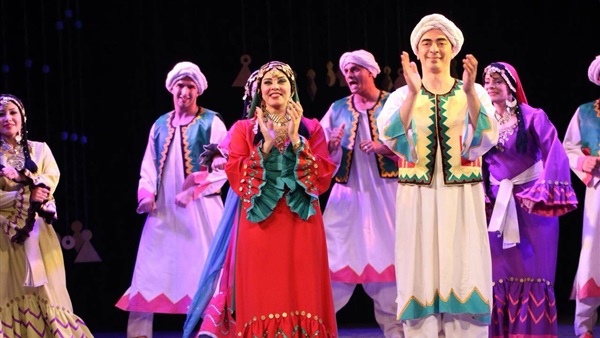Culture Hub
Art: Connecting the human race

Since the beginning of history, art has been one of the peaceful ways to connect mankind, regardless of where they are or what they believe in.
“Art helps us identify with one another and expands our notion of ‘we’ from the local to the global,” says Olafur Eliasson (an artist).
Here is a list of local arts which show cultural exchange and interconnectedness.
Al Aragoz (Folklore puppet)

Al Aragoz began in the ancient Pharaonic era, and it was called “Ergos”, which literally means “make certain words”. Then, back in the Ottoman era, it was called “Karakoz” or “Ara Oz”, meaning the “Black Eye”, reflecting the idea of looking at life with a black lens.
In the modern era, Al Aragoz caused the emergence of the puppet theater, which was founded in 1960 by the monologist and the Egyptian artist Mahmoud Shekuku, who was nicknamed “Charlie Chaplin of Arabs”.
As for the doll itself, it was made of old, light wood and cloth. The Aragoz player controls the head of the doll with the index finger, and he/she moves its hands with the middle fingers and thumb.
Tanoura dance

The Tanoura dance is an Egyptian dance of Sufi origins. The origin of the Tanoura dance belongs to the Turkish philosopher and poet Jalaluddin Rumi, who was one of the pillars of Sufis in the 13th century, and the first Tanoura dancer at the beginning of the Fatimid state.
Egyptian artists made some additions to the Tanoura dance to make it more attractive to people, such as tambourines, lanterns, and colours embellished with fast rhythms.
The Tanoura is a rhythmic dance performed collectively in circular motions, which stems from the Islamic Sufi sense with a philosophical basis. The dance is often accompanied by prayers, dhikr, praise, or popular folklore, while spinning. This is because, while dancing/spinning, the dancer aims to reach a sublime stage of spiritual serenity.
Al Rababah (Folkloric instrument)

Rabab or Rababah is an ancient Egyptian musical instrument, with a single chord, that was first created by ancient Egyptians. Many poets in Upper Egypt use it.
It was made of simple tools that were available for the people of the desert, such as tree wood and goat or deer skin. It became the first traditional art of desert nomads.
The Rababah instrument is mentioned in many ancient works of senior scholars, such as Al-Jahez in the Collection of Epistles and Ibn Khaldun. A detailed explanation is given in Al-Farabi’s Big Music book. There is a picture of the Rababah instrument on a piece of silk found in Iran, and it is now in Boston Museum of Art.
After the Islamic conquest of Andalusia, the Rababah moved to Europe and changed its name. In France, it became the “Raba”, in Italy, the “Ribek”, and in Spain, the “Rabel” or “Erbil”.
The art of playing the Rababah is considered an ancient heritage that is now close to extinction.
The Art of Engravings and Ornament
Egyptians have practiced painting and sculpture since ancient times. With the advent of Christianity, an Egyptian school of iconic art emerged, the styles of decoration developed, and Egyptians excelled in the arts of decoration and engravings in architectural and applied life.

As Islam entered Egypt, architecture flourished, and the arts of decoration, engraving, and glass industry developed in the stained glass industry, which Egyptians took from ancient Egyptians and ancient Romans. They formed beautiful lamps decorated as a niche for mosques. They also excelled in forming pottery, porcelain, and beautiful glassware.
In addition to the art of embroidery and the manufacture of carpets, there are also fine arts that played a major role in embellishing houses in daily life. Egypt was the annual provider of the Ka’aba casing, where the artists embroidered and adorned with gold threads the writings of the Koran, giving it an attractive appearance.
Folk arts

Folk arts are the arts associated with the people and reflecting different categories. In the first half of the 20th century, folklore was scattered across Egypt.
The Folk Arts Centre was established in 1957 as a scientific centre to register folklore of all kinds all over Egypt. This climate encouraged the brothers Ali and Mahmoud Reda to establish a folk dance troupe called “Reda Troupe”. In 1960, the National Folklore Troupe was established with the help of experts from the Soviet Union. In 1961, the Reda Troupe joined the Ministry of Culture. At the same time, the Ministry of Culture established the National Circus to commemorate popular circus arts, which were almost extinct.
In simple words, art can let you feel that you are part of it all. It can make you feel more inspired and energized, as well as more connected to the entire human race.
Share
